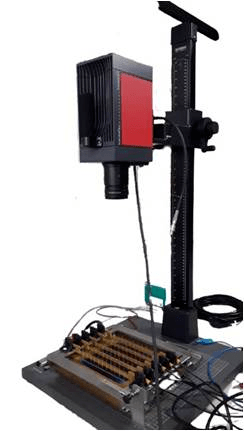


The latest addition to the advanced characterization capabilities of NCPRE is a lab-scale lock-in-thermography system for crystalline silicon solar cells and solar PV modules. The high-end camera unit consists of a cooled InSb detector with a mid-wave infrared spectral range (MWIR) of 2-5μm. The temperature resolution at 30°C is < 25mK, typically 20mK. With appropriate control and data acquisition hardware and software, thermal images of solar cells are captured after applying suitable biases across the solar cell. These images are then processed to analyse local shunts and local dark and illuminated current-voltage (I-V) characteristics of solar cells according to the two- diode model using "Local IV2" software developed by Prof. Otwin Breitenstein in Max Planck Institute of Microstructure Physics, Germany. One of the primary advantages of lock-in-thermography over other stationary methods is that it significantly improves the sensitivity due to the ac averaging technique and improves the image's spatial resolution.




